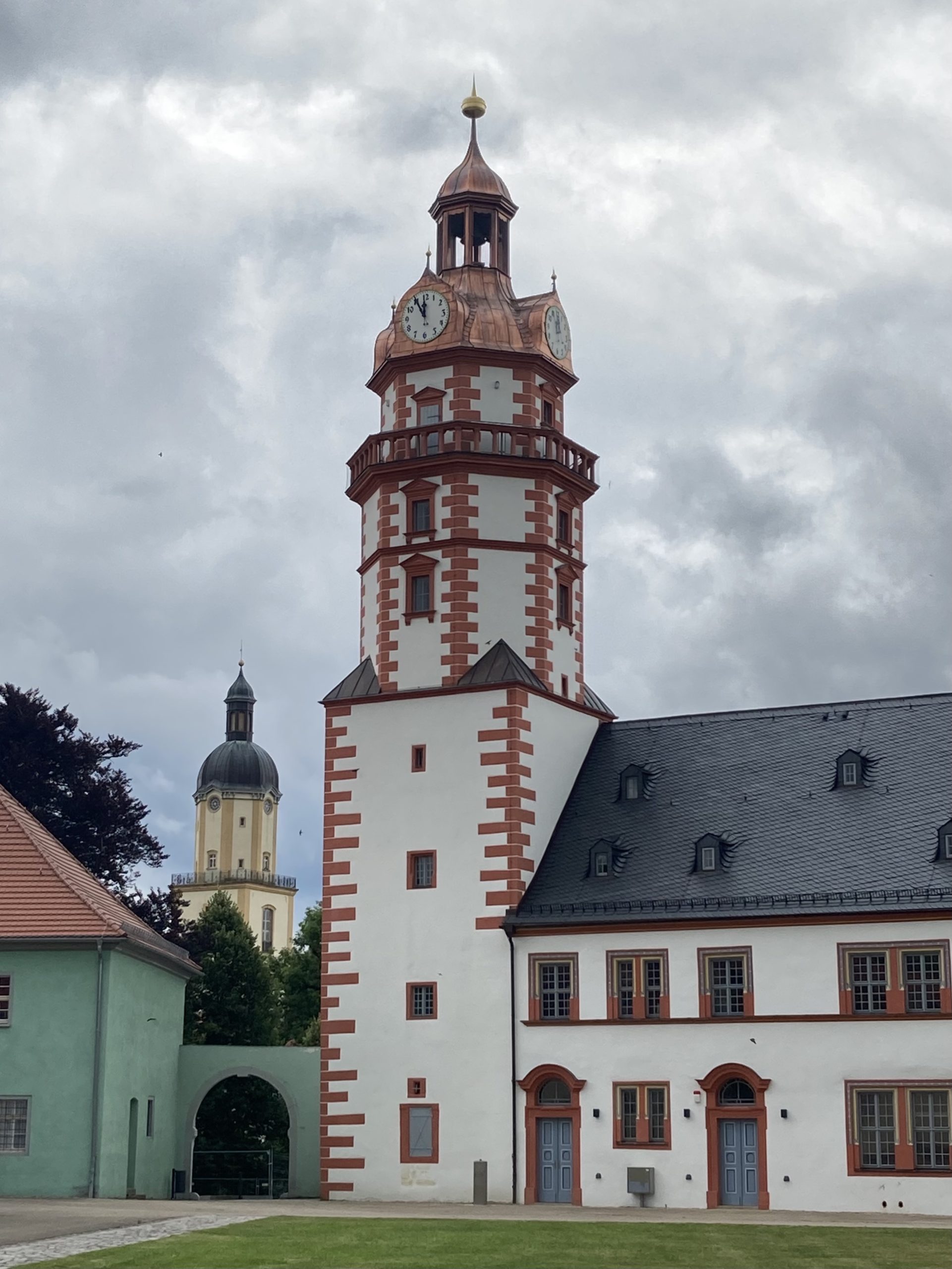
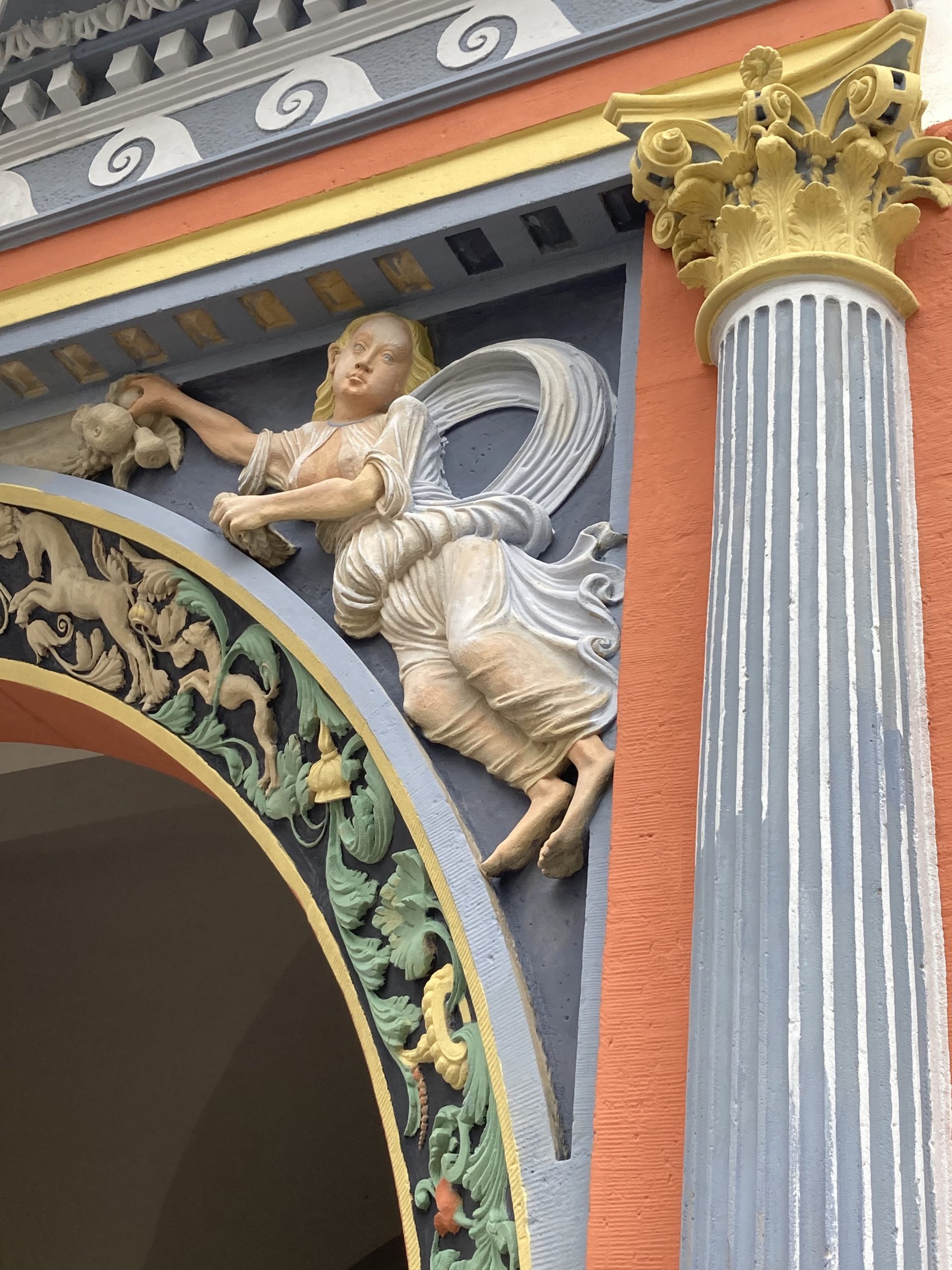
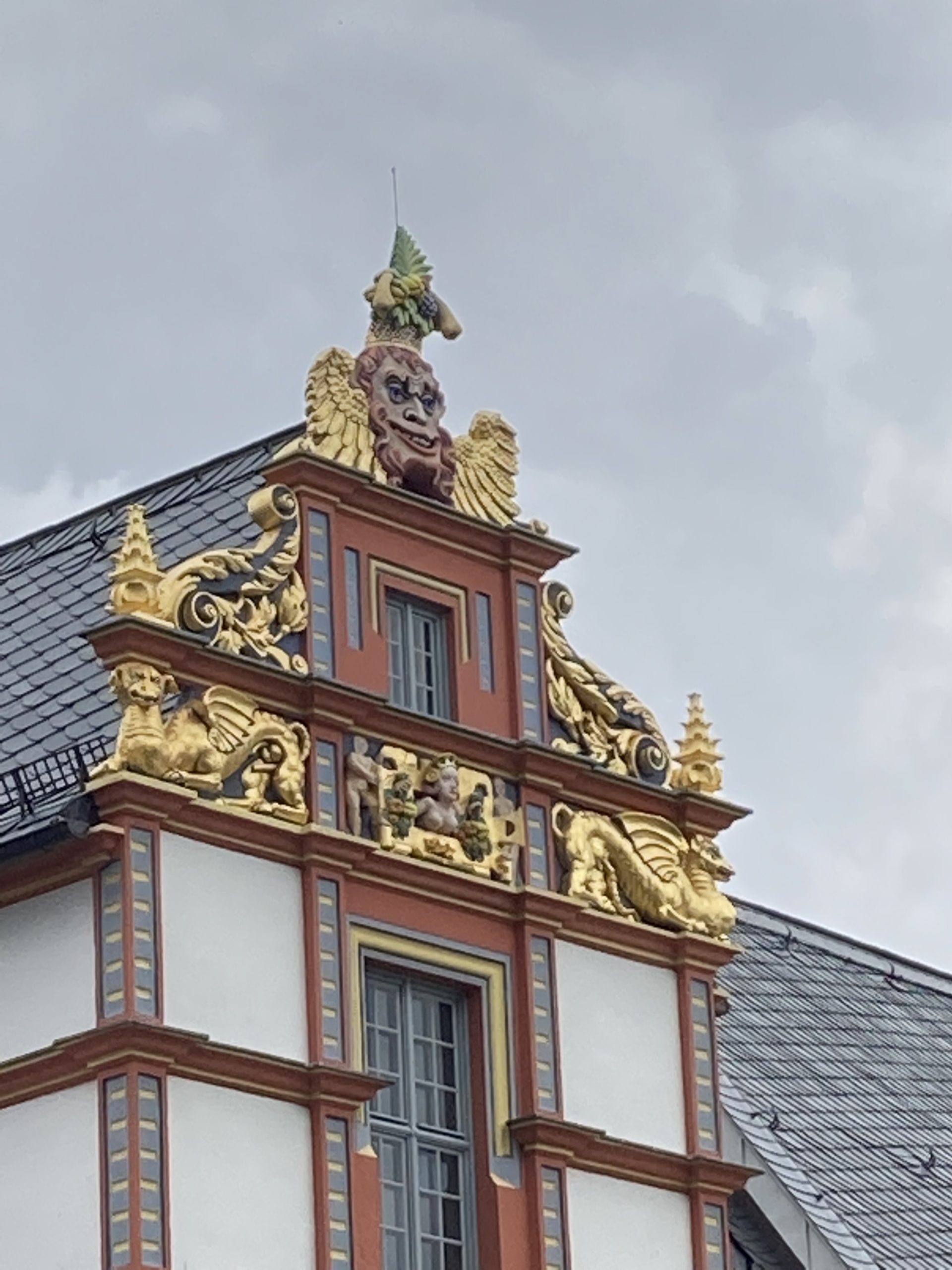
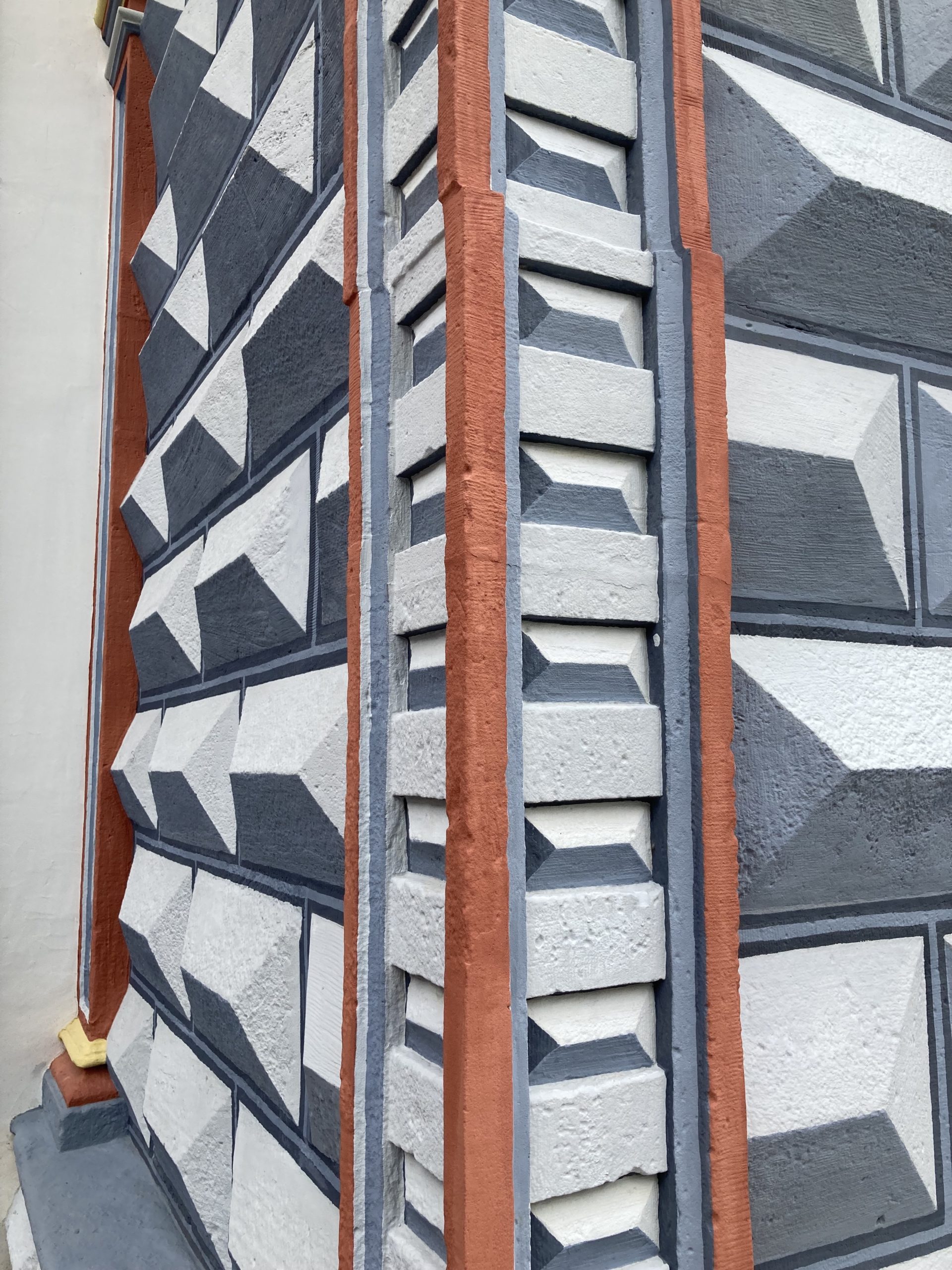
This morning I played at the service in St Trinitatis. After this and before leaving for Gotha I decided to take a quick look at the castle, Schloss Neideck. The first image shows what I saw as I approached the castle – in the background you can see the tower of St Michaelis where I played last night, it was really only a stone’s throw from the castle grounds. The castles’ inner court is currently undergoing restoration and closed to the public. I was, however, very lucky, as the gate to the inner court was open when i arrived. I ventured in and discovered the man in charge of the restoration work, explaining what he was doing and why to a group of friends, one of whom knew him personally. On the second image you can see an angel in the process of being restored. Below the angel the frieze is not entirely painted yet and there is a striking difference between the painted and unpainted bits. The restorer-in-chief described how he came to make decisions about certain materials, for instance the gold plate on the third image. Apparently there were discussions concerning this gold plate, as various people didn’t believe that these details on a roof would have been gold-plated in the 16th century. The restorer discovered that all the now gold-plated elements were not smooth, but “pimply”, and this not by chance but by design. He told us how a smooth gold-plated surface doesn’t reflect the light well and tends to look dull, which is why he deduced that these “pimples” suggested gold-plated elements. As you can see on the photograph, despite being a dull day, the gold is really shiny. Finally he also showed us how the castle’s original builders and decorators used trompe-l’oeil technique to enhance the architectural design.
The image below show one wing of the castle which housed the Gymnasium at the time Bach was in Ohrdruf. It’s fair to assume that when we look at the first floor windows, we’re looking into a classroom Bach would have known…
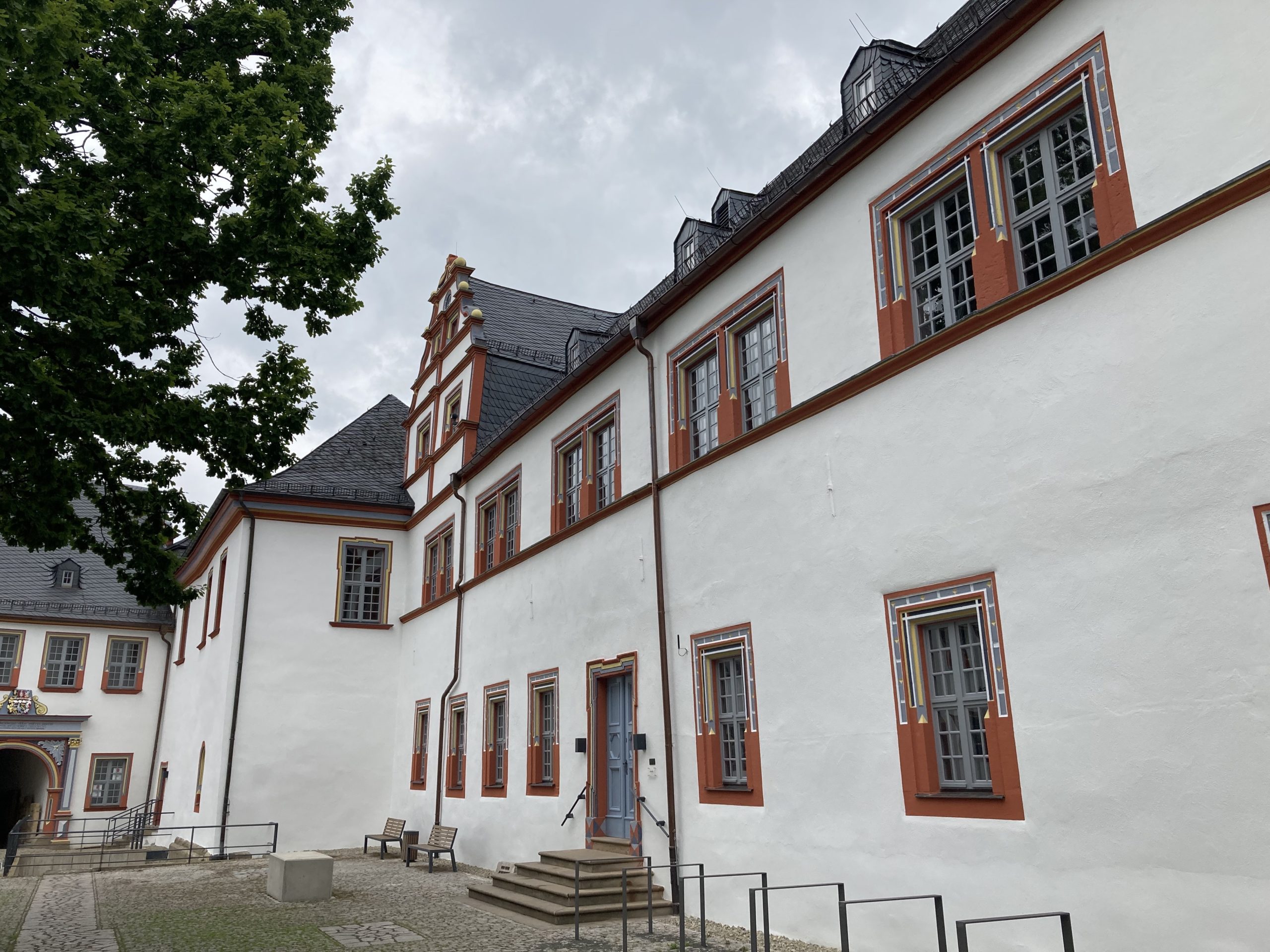
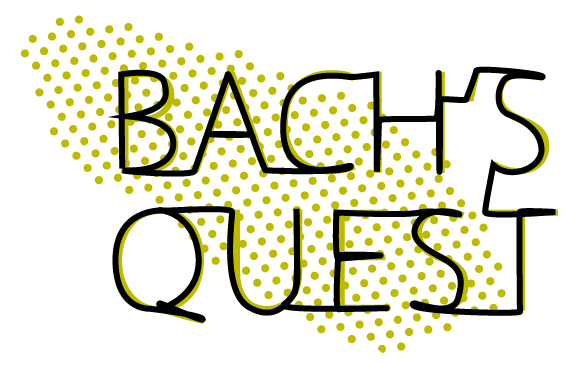
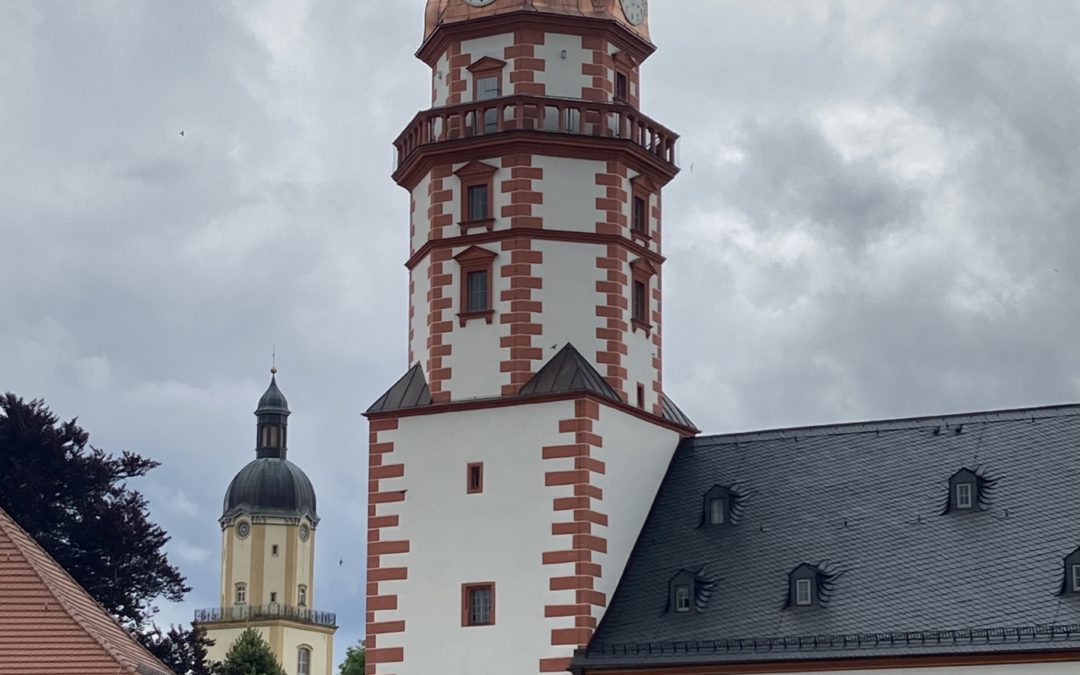
TYVM . Great pictures and very interesting information…. Looking forward to your performance tonight. …???